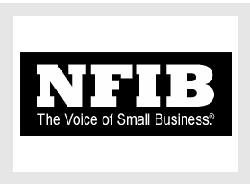Small Business Optimism Rose to 100.3 in July
Washington, DC, August 12, 2025-The NFIB Small Business Optimism Index rose 1.7 points in July to 100.3, slightly above the 52-year average of 98.
Contributing most to the rise in the Optimism Index were respondents reporting better business conditions and reporting that it is a good time to expand. In contrast to the Optimism Index, the Uncertainty Index increased by eight points from June to 97. Twenty-one percent of small business owners reported labor quality as their single most important problem, up five points from June and ranking as the top problem.
“Optimism rose slightly in July with owners reporting more positive expectations on business conditions and expansion opportunities. While uncertainty is still high, the next six months will hopefully offer business owners more clarity, especially as owners see the results of Congress making the 20% Small Business Deduction permanent and the final shape of trade policy. Meanwhile, labor quality has become the top issue on Main Street again,” said NFIB chief economist Bill Dunkelberg.
Key findings include:
- In July, there was a notable improvement in overall business health. When asked to rate the overall health of their business, 13% reported excellent (up five points), and 52% reported good (up three points). Thirty-one percent reported the health of their business was fair (down four points), and 4% reported poor (down three points).
- The percent of small business owners reporting poor sales as their top business problem rose one point to 11%. This is the highest level of poor sales since February 2021.
- The net percent of owners expecting better business conditions rose 14 points from June to a net 36% (seasonally adjusted). This reading is comfortably above the historical average.
- In July, 16% (seasonally adjusted) reported that it is a good time to expand their business, up five points from June.
- Eleven percent of owners reported that inflation was their single most important problem in operating their business, unchanged from June’s lowest reading since September 2021.
- The net percent of owners expecting higher real sales volumes fell one point from June to a net 6% (seasonally adjusted). Though expected real sales are higher than actual sales, the current reading is also comfortably below the 52-year average.
- Twenty-two percent (seasonally adjusted) plan capital outlays in the next six months, up one point from June, but seven points below the historical average of 29%.
